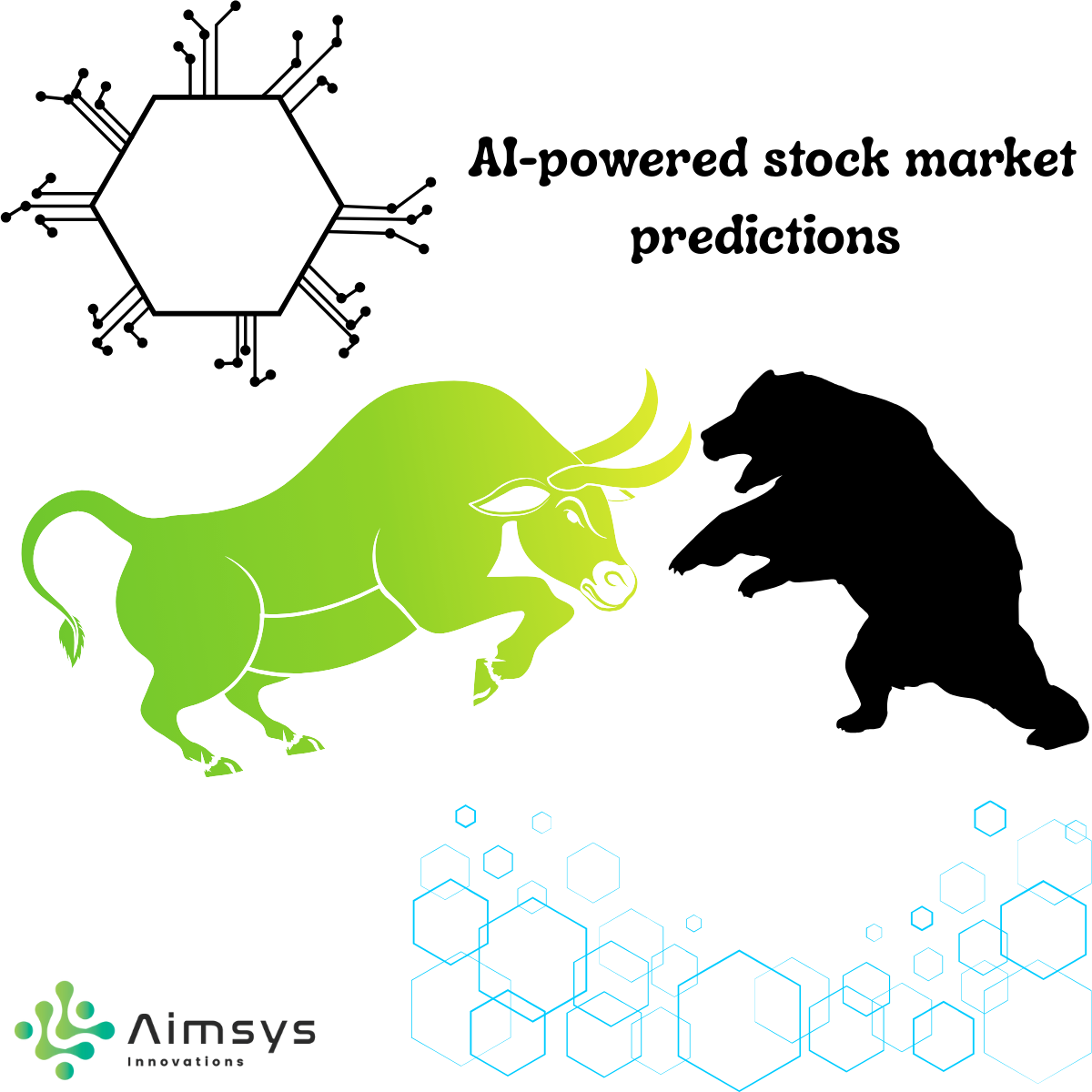Posted At: Aug 16, 2025 - 364 Views

🧬🧑💻 AI-Powered Stock Market Predictions: Transforming Finance Through Data-Driven Insights
The stock market’s volatility and complexity have long challenged even seasoned investors. Traditional methods—based on human intuition, chart patterns, and financial ratios—are increasingly being outpaced by advanced technologies.
Enter Artificial Intelligence (AI). Today, AI-driven systems are capable of analyzing enormous datasets, predicting trends, and executing trades at lightning speed. From institutional hedge funds to everyday retail traders, AI is transforming financial decision-making and offering new ways to navigate uncertainty.
In this article, we’ll explore how AI predicts stock market trends, examine the innovations driving this shift, and consider what the future of AI-powered investing could look like.
🧠 How AI Predicts Stock Market Trends
AI stock prediction follows a structured process:
- Data Collection – Gathering massive amounts of information from multiple sources: price histories, trading volumes, corporate filings, economic indicators, and even news and social media.
- Data Processing & Cleaning – Preparing raw data by filtering noise, correcting errors, and structuring it for analysis.
- Model Training – Using machine learning and deep learning techniques to detect hidden patterns and relationships.
- Prediction Generation – Forecasting short- and long-term price movements, volatility, and risk.
- Continuous Learning – Updating models as new data streams in, ensuring predictions evolve with market dynamics.
Unlike static models, AI adapts in real time, learning from market feedback and improving accuracy.
🥇 Key Innovations in AI for Stock Prediction
👉 Natural Language Processing (NLP) & Sentiment Analysis
AI can process vast amounts of unstructured text data—like news articles, analyst reports, and social media posts—to gauge investor sentiment.
- Example: Hedge funds using sentiment analysis strategies have reported outperforming traditional models by 10–15% annually.
- Real-world impact: During events like the 2021 GameStop surge, NLP-driven systems detected shifts in online sentiment faster than human analysts.
👉 Deep Learning & Multimodal Models
Deep learning architectures, especially Long Short-Term Memory (LSTM) networks, excel at handling sequential data such as stock price movements.
- LSTM models have achieved significantly lower prediction errors compared to older statistical approaches.
- Advanced multimodal models combine technical signals, macroeconomic trends, and even alternative data like satellite imagery of store traffic to enhance forecasting power.
👉 High-Frequency Trading (HFT) with AI
AI-driven HFT algorithms execute trades in fractions of a second, exploiting market inefficiencies invisible to human traders.
- These systems process billions of data points daily.
- Firms employing AI-based HFT have reported capturing 20–30% more liquidity compared to manual methods.
👉 Predictive Analytics with Machine Learning
Algorithms such as random forests and gradient-boosted trees can recognize complex, nonlinear relationships in financial data.
- They’re used to assign stock ratings, optimize portfolios, and forecast earnings.
- Platforms leveraging predictive analytics have historically delivered significantly higher returns on top-rated stocks compared to the market average.
👉 Real-Time Risk Management
AI doesn’t just predict—it helps safeguard investments.
- Tools like backtesting engines simulate decades of market behavior to refine trading strategies.
- Some AI-powered platforms have reduced portfolio drawdowns by up to 40%, offering investors greater resilience during downturns.
♦️ Applications Reshaping the Financial Landscape
AI is driving transformation across the financial ecosystem:
- Portfolio Optimization: Dynamic asset allocation that balances risk and return in real time.
- Algorithmic Trading: Automated bots execute trades based on predictive models with minimal human intervention.
- Earnings Forecasting: Predicting company results more accurately than many Wall Street analysts.
- Technical Analysis at Scale: Instantly scanning millions of charts to identify profitable setups.
- Market Simulation: Modeling “what-if” scenarios to prepare for economic shocks or policy changes.
⚖️ Opportunities and Challenges
✅ Opportunities
- Greater access to advanced tools for retail investors.
- Improved forecasting accuracy and portfolio protection.
- Potential to reduce human bias in financial decision-making.
⚠️ Challenges
- Models can “overfit” historical data and fail in unprecedented scenarios.
- Risk of AI-driven market manipulation and ethical concerns.
- Growing regulatory scrutiny as algorithmic trading reshapes liquidity and volatility.
🌍 The Future of AI in Stock Market Predictions
The future of finance is moving toward a human-AI partnership. AI will handle data-heavy analysis, risk modeling, and automated execution, while humans focus on strategic oversight and ethical decision-making.
We can expect future systems to be:
- More Transparent – Explaining why predictions are made, not just producing results.
- More Accessible – Integrated into retail trading platforms, not limited to hedge funds.
- More Global – Incorporating climate data, geopolitical risk, and supply chain intelligence into predictions.
Rather than replacing human investors, AI will empower them—transforming investing into a smarter, more adaptive process.
✨ Final Thought:
Artificial Intelligence has already proven its value in financial markets, but its real impact is only beginning. By combining predictive power with adaptability, AI is not just forecasting the stock market—it’s redefining the very way we invest.
